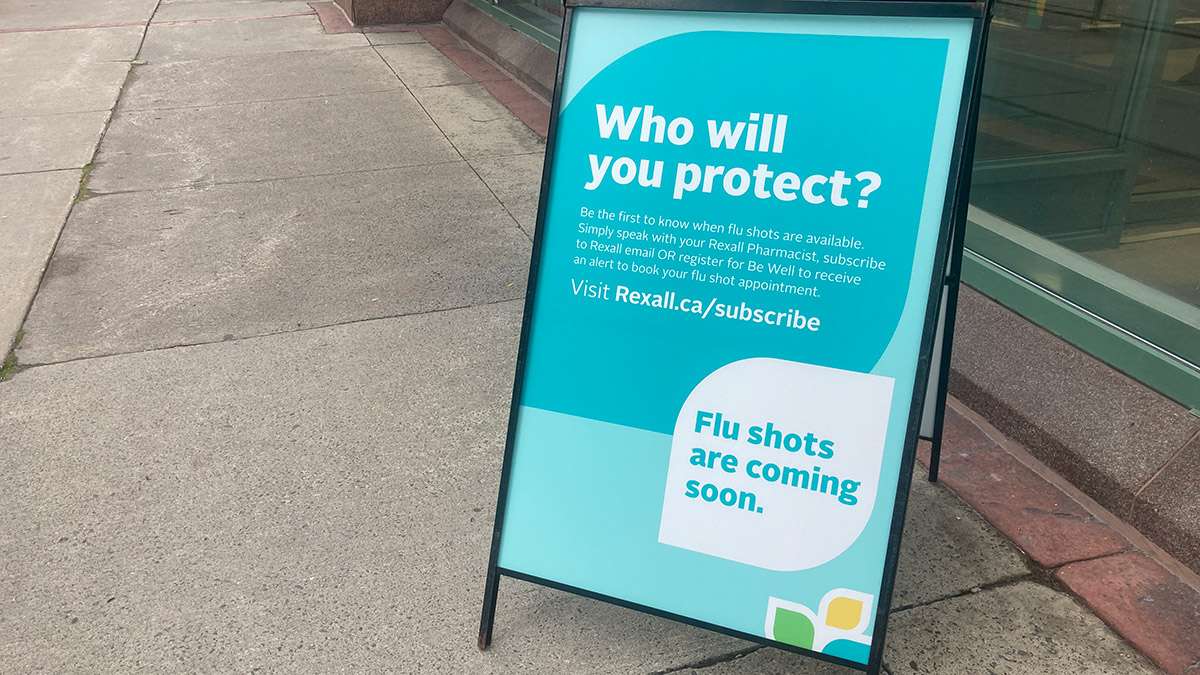Ottawa Public Health is telling parents that getting a flu vaccine for their children may be key to avoiding high rates of hospital and emergency department visits.
The Ottawa Board of Health was briefed by OPH about the agency’s 2023-2024 Respiratory Season Preparedness Plan on Sept. 18. Board member Brent Bauser asked: “What should keep us up at night?”
“I’m concerned about influenza in children, for one thing,” responded Dr. Vera Etches, Ottawa’s Medical Officer of Health.
“I don’t think that our uptake typically in children, of the influenza vaccine, is high enough. We have some indication children are more likely to be hospitalized with the influenza that’s coming our way. So, I think we need to reach parents … but that’s heavy lifting, to get people out to vaccinate their children.”
According to the Canadian Health Survey of Children and Youth, most Ottawa children do not receive an annual flu vaccine. Last year, “younger children and infants experienced high rates of influenza and RSV (a common respiratory virus), which caused an unprecedented surge in emergency department visits and admissions at CHEO (the Children’s Hospital of Eastern Ontario),” according to an OPH report.
Etches cautioned that on top of influenza, COVID-19 still poses risks, particularly to those who in long-term care homes and other congregate settings. OPH notes that “older adults … experience the highest rates of lab-confirmed COVID-19 as well as high rates of influenza. Older adults also have the highest risk of hospitalization and death from COVID-19 and this risk increases with age.”
“It’s in these settings we see some of the worst outcomes,” said Etches. “So, absolutely, we’re doing our part to make sure people are vaccinated in those settings, but there’s really ongoing work to stabilize staffing levels and leadership around infection prevention control. It’s not where we need it, still.”
The “critical staffing shortages” in long-term care homes have been acknowledged by the Ontario government since 2020 and earlier. According to the Ontario Long-Term Care Home Association, long-term care homes “will require at least 58,600 more nurses and personal support works to meet increased hours of care and new beds. That is more than double the current long-term care workforce.” In its 2023 Budget Submission, OLTCA has made recommendations to the government on how to “strengthen the foundation of long-term care,” including an increase to base level-of-care funding.
The OPH’s Plan emphasizes that “achieving high COVID-19 and influenza immunization rates this fall, especially among those at greatest risk of severe illness, will be critical to reducing morbidity and mortality and pressures on our health-care system.”
Studies investigating why individuals don’t get their vaccines, like a 2022 study on the COVID-19 vaccine uptake and intent, identify two main reasons. The first is barriers to access (such as difficulty reaching a clinic, scheduling limitations or lack of transportation). The second is vaccine hesitancy (choosing to delay or refuse a vaccine despite its availability).
OPH’s Preparedness Plan doesn’t explicitly discuss vaccine hesitancy, but its health communications strategy does include vaccine education.
The plan also acknowledges access barriers. Under the 2023-2024 plan’s immunization strategy, it says it will “focus on young children and people facing access barriers.” To this end it will continue current clinics, offer immunizations through new “after school clinics” and in rural areas “where there are limited options to access these vaccines.” The plan does not identify ways to remove access barriers other than opening more clinics and continuing existing ones.
OPH estimates that the 2023-2024 virus season will be similar to that of last year and that they are already seeing an increase in the presence of COVID-19 in the community.
This increase fits with national trends. As of the update on Sept. 12, the federal government reported that the “national percent positivity [of COVID-19] has been steadily increasing in recent weeks.”
This season, the OPH anticipates “sporadic circulation of influenza A and B and RSV beginning in September, increasing in October and peaking in December, followed by a gradual decline,” according to its report.
The Ontario Ministry of Health recommends that individuals who want to get their next COVID-19 booster wait until the fall COVID-19 booster program starts. Information released after the Plan was written shows that the general population will have access to the new influenza and XBB COVID-19 vaccines by the end of October, according to OPH program manager Marie-Claude Turcotte.




